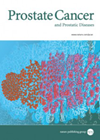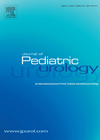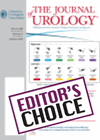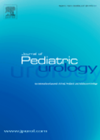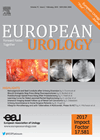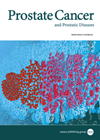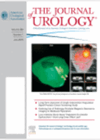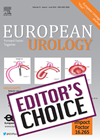
Journal Reviews
Incidence and risk factors of suicide after a prostate cancer diagnosis
This is an observational study looking at 1,281,393 men diagnosed with prostate cancer and 842,294 matched prostate cancer-free men. There was an overall increased relative risk of suicide of 2.01 in men diagnosed with prostate cancer compared to those without,...
Post prostatectomy outcomes of patients with high-risk prostate cancer treated with neoadjuvant androgen blockade
This is an interesting paper reporting on the use of neoadjuvant androgen blockage in patients with high-risk prostate cancer undergoing radical prostatectomy. Previous work in the literature has shown an improvement in the rate of organ-confined disease and decreased positive...
The natural history of prostate cancer on MRI
Multiparametric MRI features heavily on a number of active surveillance protocols. This study looked at 86 men on active surveillance who had an mpMRI prior to 2013 to assess how lesions changed over time. Two blinded radiologists examined all the...
Ipsilateral ureteroureterostomy: does function of the obstructed moiety matter?
Upper pole nephrectomy has been the traditional surgical management of children with poorly functioning upper pole moieties in duplex renal collecting systems having ureteral ectopia and ureterocele. However, ablative surgery confers a risk of functional loss to the remnant moiety...
Is routine renal tumour biopsy associated with lower rates of benign histology following nephrectomy for small renal masses?
There has been a considerable increase in the detection of small renal masses (SRM). Approximately 20% of these turn out to be benign lesions on final histopathological analysis. Therefore upfront surgery can be overtreatment in such a group of patients....
Comparing treatment modalities for transplant kidney VUR in the paediatric population
The management of Transplant kidney vesicoureteral reflux in the paediatric population is a heavily debated issue and Deflux® injection to manage VUR is both widely described in the literature and commonly practised. In this paper, these authors have put forth...
Dilemma of second primary tumour
Long-term survival in localised prostate cancer (CaP) can be achieved with treatment by either radical prostatectomy (RP) or external beam radiotherapy (EBRT). The development of second primary tumour is poorly understood in such cases. This retrospective study included 84,397 cases...
Selective denervation of the bladder
The treatment of refractory overactive bladder is currently limited to neuromodulation (sacral nerve stimulation or percutaneous tibial nerve stimulation) or botulinum toxin injections. Although all these options are valuable, they have their own limitations and may not be suitable for...
MRI scans and cardiac devices
There is an increasing use of MRI in many urological disorders e.g. prostate cancer and renal cancer. Many patients with cardiac pacemakers or implantable cardioverter defibrillators (ICD) are denied access to MRI scans due to safety concerns. MRI is given...
Serum cholesterol and risk of high-grade prostate cancer: results from the REDUCE study
This study examined a cohort of non-statin using patients who participated in the REDUCE study. The REDUCE study included men who had an elevated prostate specific antigen (PSA) and a negative baseline prostate biopsy who then underwent year two and...
Comparison of pathological stage in patients treated with and without neoadjuvant chemotherapy for high-risk UTUC
High-risk upper tract urothelial carcinoma (UTUC) has been associated with poor survival outcomes. The authors evaluated the role of neoadjuvant chemotherapy in high-risk cases prior to radical nephroureterectomy (RNU) in terms of pathological stage of the final surgical specimen. A...
Repeat transurethral resection in non-muscle invasive bladder cancer
The authors felt this is a big problem because there is no standardised practice on re-resection following initial transurethral resection of bladder tumour (TURBT). Getting detrusor muscle in the first specimen is thought to be important. However muscle is not...

